Tips to Modernize Email Design


Trends in design continue to evolve over time for homes, cars and fashion, and email marketing campaigns are no exception.
Marketers must continue to innovate and adapt to new devices and ways of consuming content in order to ensure that their brands remain relevant and can keep up with today's fast-paced, digital world.
To avoid making missteps or falling behind, use the following tips to create seamless and creative email designs that intrigue subscribers and keep them engaged.
Responsive Design Becomes the New Standard
In the past, responsive emails - messages with designs that are easily adaptable to different screen sizes with minimal rendering - were considered a trend. Now, consumers expect to receive emails that are rendered appropriately on all devices. In other words, responsiveness has become the new standard. Email campaigns must look and work flawlessly on any device they are opened on, whether it's a desktop, tablet or smartphone. Broken links and content that fails to meet this expectation can damage a brand's reputation and hurt revenue as well.
In order to achieve and maintain this new standard, marketers should adopt a responsive-first mentality by simplifying design elements when possible. Avoid long emails, multiple calls-to-action and banners with no content. Marketers can capture more attention with simple and clear design elements that will also take minimal time to render. Use bold and eye-catching headlines, as well as clear buttons that direct users to a landing page or a brand's site.
Marketers are Designing for Mobile First
Smartphones and other mobile devices have had an enormous impact on how users consume media.
According to a recent survey, 44 percent prefer brand interaction through email. Additionally, an Email Monday report found that 75 percent of consumers reportedly check their email most often on their mobile devices, compared to desktop. It is now easier than ever to make purchases and browse sites on phones, and marketers must adapt to this.
When designing email campaigns, don't underestimate the influence that mobile has had on consumer lifestyles - even if a certain demographic doesn't appear to be as tech savvy as a younger generation.
Interactivity in emails goes hand in hand with mobile adoption. It's not uncommon to see animated GIFs in the body of an email, or videos integrated within a campaign. While these dynamic content pieces are certainly eye-catching, don't forget to check that all design elements are mobile-friendly and are easily viewable on portrait mode.
Gmail is Pushing the Boundaries of Email Marketing
Gmail is pushing the boundaries of what kinds of content marketers can experiment with and create within an inbox, allowing for even more interactive and engaging campaigns. It was the first email service to use HTML5, which allows users to put actual video into an email. The service provider recently announced it will bring the power of Accelerated Mobile Pages (AMP) to its inboxes, allowing users to browse and view full websites within the body of an email without leaving the platform.
Email marketers should capitalize on these innovative design features for their Gmail subscribers. However, be sure to exercise caution as not all providers have integrated this functionality. Remember to use segmentation to make the most of both worlds by optimizing campaigns with HTML5 and AMP for only Gmail users, while sending similar campaigns without these features to others.
Branded Templates are Coming to the Forefront
Emails are transitioning away from plain text and basic HTML, and are incorporating more branded designs. Customizable templates can be a great starting point for marketers to add in headers, footers and social media buttons to emails to create a more integrated campaign. This allows brands to ensure brand messaging remains consistent across all platforms.
Templates are incredibly valuable to the thousands of email marketers who utilize them everyday. They have proven their worth to many who have tested them for their campaigns across multiple platforms. However, marketers should keep in mind that this can act as a double-edged sword. The widespread adoption of templates can sometimes make it more difficult for brands to stand out to consumers in a cluttered inbox because all emails begin to look similar to one another. To avoid this, marketers should customize templates as much as possible while following brand guidelines. Use web-safe fonts that are easily digestible for readers, such as Arial, Verdana and Helvetica, and keep the number of colors limited to two or three that reflect brand logos.
It's more important than ever for marketers to continue adapting and evolving with the technology that is changing how users consume and interact with media. Failure to do so not only harms brand reputation, but also affects how users engage with brands. By taking these steps to design emails that are creative, responsive, mobile-ready and clearly branded, marketers can drive more successful campaigns and optimize engagement with subscribers.










